
Scrap quilts have a charm and look all their own. And we as quilters cannot help but be captivated by their quirky mix of colors, patterns, fabrics and the occasional unexpected blocks. Antique quilts especially evoke a sense of days gone by, when life moved at a slower pace. The softened and often faded "vintage' look of these quilts impart a sense of charm, comfort, softness and a 'please cuddle me' feeling. It is this desire for a 'vintage' look that has quilters across the globe seeking out patterns and books. Walk through any quilt store and there is sure to be at least one book devoted to the subject. Antique quilts also serve as a wonderful resource for inspiration.
The 1890's Kansas Trouble quilt top is a good example. The quiltmaker's fabric choices include stripes, dots, fabrics with small prints, stripes with small designs and what appears to be almost solids. But what is going on with the two blocks that have either an entire or partial golden-yellow background?
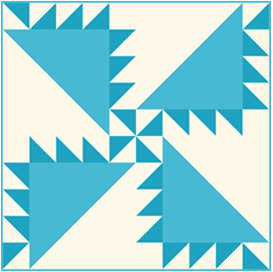
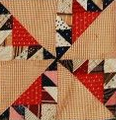
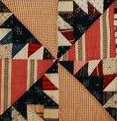
Even these two blocks are not the same when you view them side by side. Notice that the block on the right features two striped fabrics for the background.

Did you spy the mistake in the last block of row two? The strip of HST (half-square triangles) are facing the wrong direction. Why did the quilter include the mistake and the two alternate fabric blocks? Was it because she ran out of the other fabrics but still wanted the finished quilt to be a specific size? Was she teaching a young girl and didn't want to dash her enthusiasm by tossing out the block?
We will never know, but the inclusion of these quirky blocks make this quilt so charming. And to be honest, how long did it take you to find the block with the mistake? It certainly wasn't the first thing you noticed when viewing the quilt, was it? The business of the pattern and her clever use of mixing it in with the other blocks, hid the fact that she made an error in construction. So, the next time you are working on a quilt, don't toss a mistake block aside. Alex Anderson has some tips for cleverly working problem blocks into your quilt (below).
While the quilt may seem chaotic in its fabric choices, there is actually a consistency running throughout the entire design? Look again. The quiltmaker kept the focus to stripes, dots, and stripe-like with a dot like print; That's the key. It doesn't matter that she threw in a few bits of pink, orange, yellow, or blocks with mistakes. She may have had other scraps in her stash, but she kept the scope of her fabric choices for this quilt within a narrow range. As the viewers eyes move across the harmonious quilt there is the occasional thrill brought on by spotting an out of character block. THIS is what make a scrap quilt so enticing! The more the viewer looks, the more nuances they spot.
Today, we as quilters have a wealth of fabric options available to us. In the event there is not enough of 'that certain color of red', we can simply go out to find just the right match. However, this too can overwhelm a quilter. Quilt teachers and authors Judy Turner and Margaret Rolfe point out in their book Successful Scrap Quilts “our need to match or find the perfect fabric can mean that the quilt can have too much of a planned or over coordinated feel...Simply substitute something on hand that may or may not have been a good match. Odd substitutions of fabrics or problem blocks give these antique quilts that spark and interest. Not having everything match makes for a more interesting quilt."
Let's look at some examples of interesting scrap quilts:
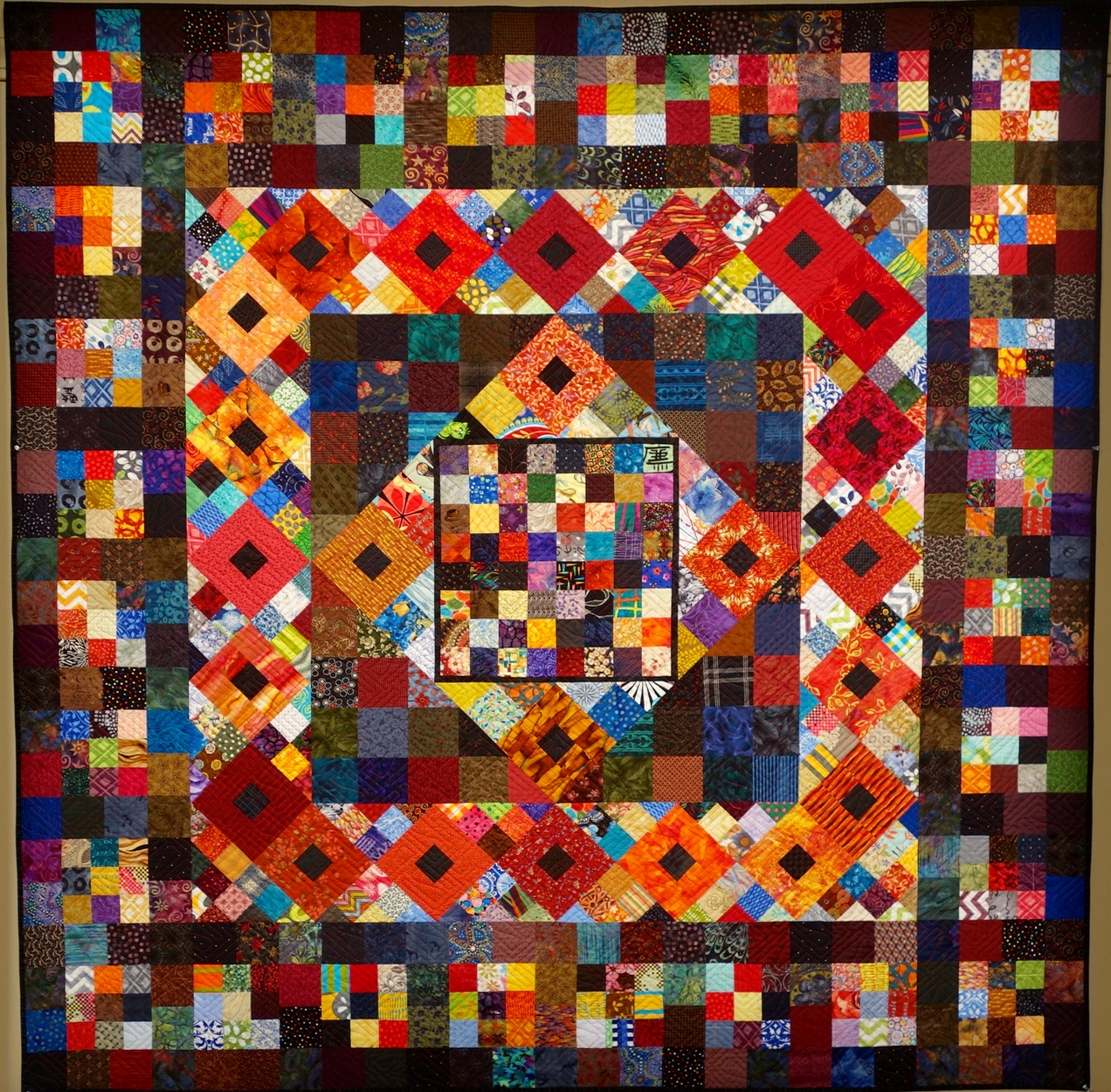
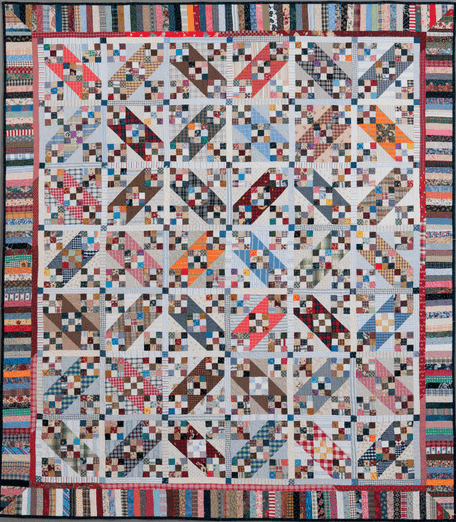
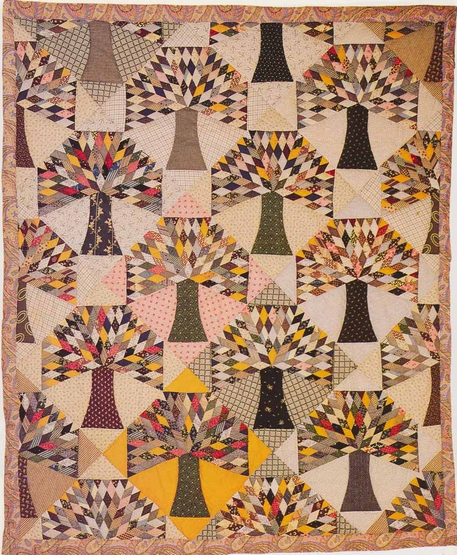


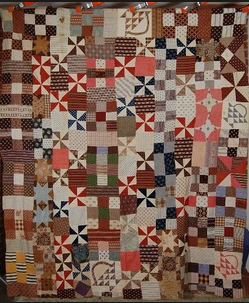
Alex Anderson has had a love affair with scrap quilts for many years. Follow along as she shares her method for creating scrap quilts that spark interest and further investigation no matter what type of fabric is included.

Scrap Quilts
by Alex Anderson
(Shows 408, 809, 1210,1307)
I am crazy about my stash. Every single piece of fabric, lights to dark, dots and stripes, flower and checks, vintage and new, I love every one of them. So it’s not a surprise that I enjoy making scrap quilts because it means that I get to play with all of my fabrics and maybe even buy a few more.
But I know that making a scrap quilt can sometimes be a bit overwhelming, and while some quilters are lucky enough to do it intuitively, many of us need some structure to work with while dealing with all of those fabrics and choices. I’d like to share my ideas about scrap quilts, how to make a quilt you love that uniquely yours, AND dealing with those ‘what was I thinking when I made these blocks?’ dilemma.
WHAT IS A SCRAP QUILT?
Is it a quilt made entirely from fabric leftovers? Is it a quilt that incorporates a wide variety of fabrics or that partners different fabrics in each block? Is it a quilt made from both old and new fabrics? It’s all of the above. A scrap quilt draws the viewer in and continually surprises with new discoveries. A scrap quilt is impossible to take in all at once and retains its mystery far longer than a quilt with a limited number of fabrics and repeated blocks.
The only rule for making a scrap quilt is that there are no rules! But here are some ideas that will take some of the mystery out of making one:
- Incorporate lots and lots of different fabrics – as many as possible.
- You can use a formula; for example, placing lights and darks in same position in blocks throughout the quilt; or switching lights and darks around from block to block; or using the same fabric as a light in one block, a medium in another, and a dark in the third.
- Use a single background fabric to tie things together or a different background fabric in every block or just dive in and see what happens block by block.
- Interpret “scraps” loosely – the key is quantity, not where it came from. Focus is on the overall impression, the big picture, and not on every individual fabric or block.
- Not every fabric or block is a knockout; it’s the mix that makes it work. And it’s much more forgiving than a quilt with just four or five fabrics.
Scrap quilts and contemporary quilts are not mutually exclusive. Traditional patterns look new when dressed up in cool fabrics as long as you use a lot of them.
FABRIC STRATEGIES
Routinely evaluate your stash, particularly before starting a scrap quilt, to see if there are any serious gaps in your inventory. A healthy stash includes a good mix of color, value and character of print.
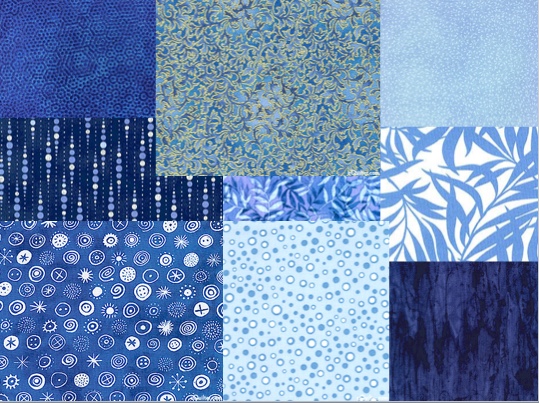
Color: When we speak of color, we’re speaking of that color’s entire family. It includes all the lights and darks, tints and shades of that particular family.
Don’t be afraid to open yourself to all the colors available to you, not just the ones that you love and know how to work with. As you continue to grow your fabric stash, keep an eye out for the colors that are missing from the collection and hunt them down the next time you go shopping.
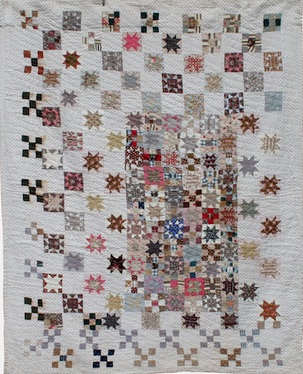
Tip: Look at old scrap quilts for inspiration and color combinations that would never cross your mind as candidates for your next quilting project, but they work beautifully and still intrigue us 125-plus years later!
WHY SHOP FOR A SCRAP QUILT?
New fabrics continue to appear in the marketplace. Colors and styles come and go and it’s always a good idea to take advantage of opportunities when we see them. A scrap quilt is the perfect opportunity to use old and new fabrics, and adding a few trendy colors and prints will freshen your quilt. When I find something I like or that I know will fill a gap in my collection I buy at least 1/3 yard. If I find a print that has the potential to become the foundation for a quilt, I add an additional 1/2 yard just in case. But you’ll want to consider the size quilts you usually make. If you lean toward king or queen sized quilts, you’ll want to buy more fabric than if you typically make lap or baby quilts.

Don’t be afraid of using large scale or other unusual designs, as you will be cutting these fabrics into small pieces. Make a window in an index card the size and shape of the piece you will be cutting for your project to preview a potential fabric. Look how interesting the small square on the zucchini fabric becomes. No one strolling by your quilt is going to notice that the original fabric was veggie themed.
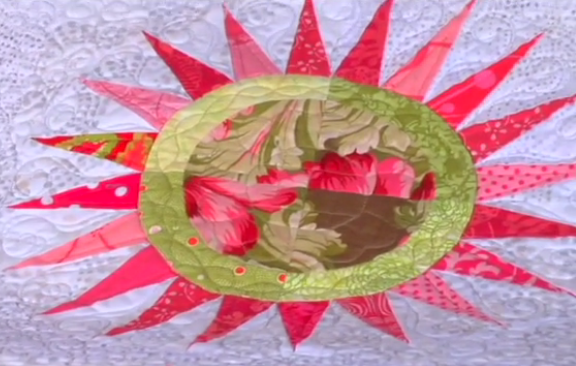
Find a Fabulous Focus Fabric:
A focus fabric is a multicolored, often large-scale print that you can build a color scheme...and a quilt...around. Study the colors in the fabric, pull a wide variety of fabrics in those colors from your stash, check that they include a good range of value and of character of print and you’re ready to go.
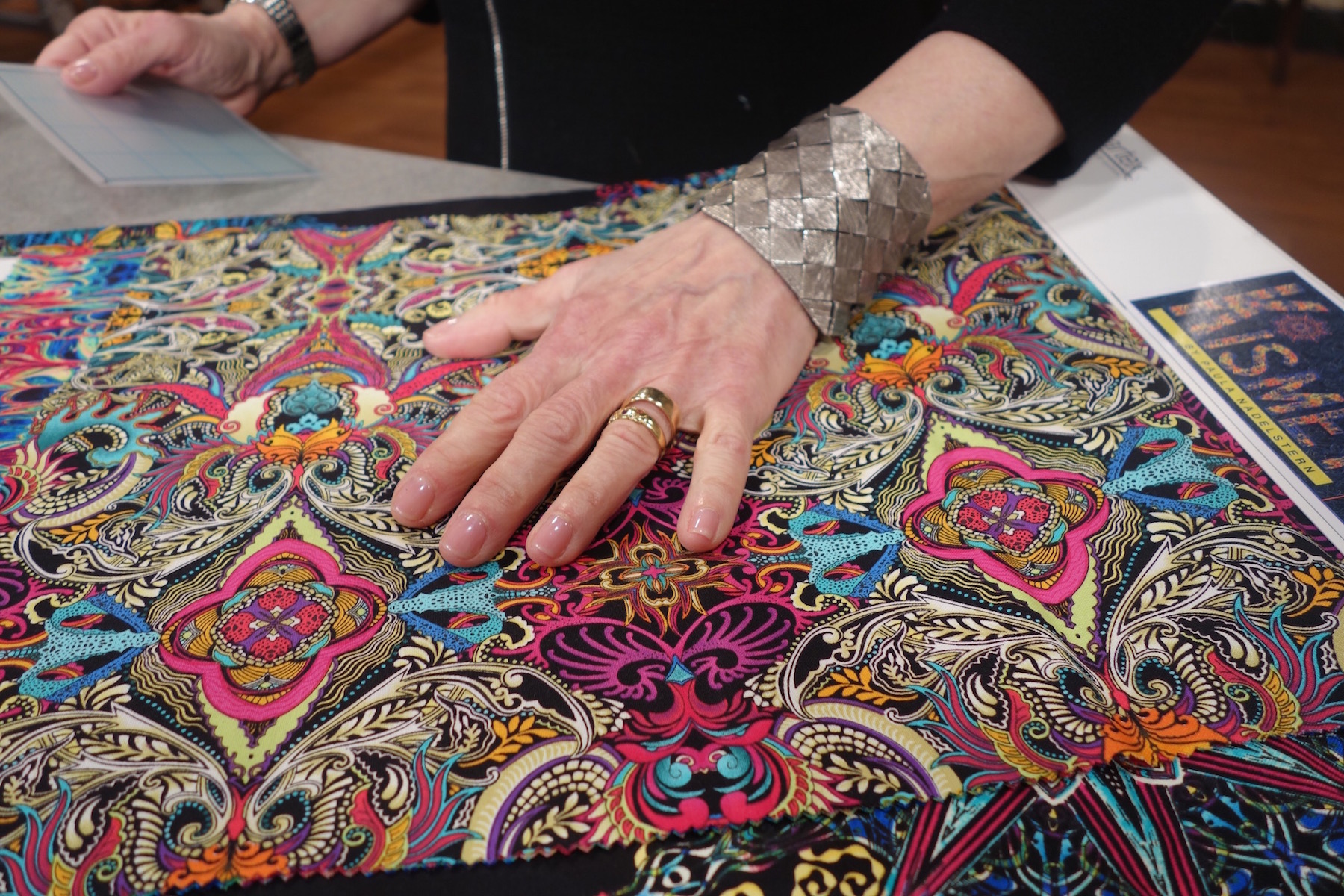
Showcase A Designer: When a designer’s fabrics just speak to me, I find myself adding more and more of it to my stash and overtime my collection grows to include vintage pieces as well as new creations from that designer. These make a great starting point for a super scrap quilt.
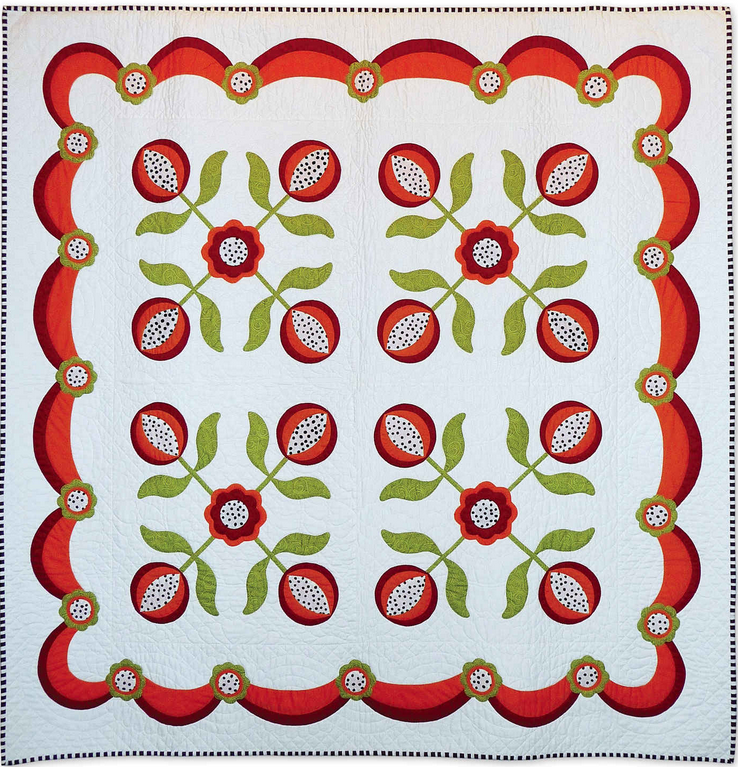
Capture a Style or an Era: Some of my favorite scrap quilts are those that replicate the look or style of a particular time period and there are so many wonderful reproduction fabrics available to make your quilt look as though it was fashioned a long, long time ago.
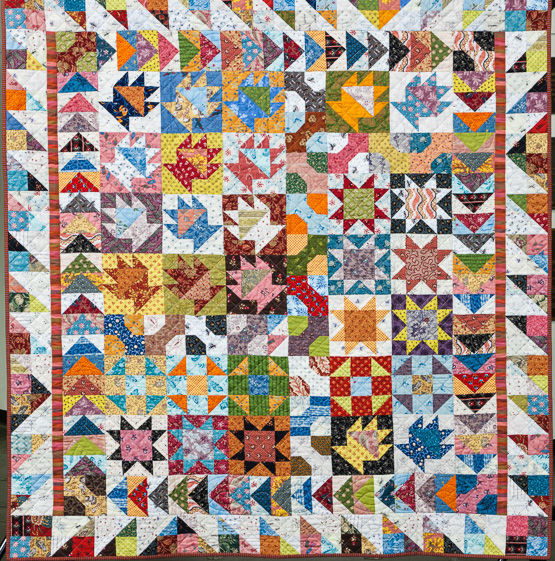
Throw Caution To The Wind: Mine your entire stash and build your scrap quilt. Don’t buy a thing, use what you have and tap the rainbow that lives in your stash.
BLOCKS TO SUCCESS:
The quirkiness of antique scrap quilts often comes from the use of fairly simple blocks like Four-Patches, Nine-Patches, Star variations, Log Cabins, Churn Dash, Flying Geese. Construction is easy with a minimal number of pieces, perfect for a scrap quilt. I tend to use small blocks, 4 or 6 inches, depending on the number of pieces; I may use a 10” block if it’s a more complex block but not very often. C&T’s Quick and Easy Tool book offers 110 block designs and is a great reference for any scrap quilter.
As you begin working on blocks, get them up on a design wall, let go and keep going. Just keep making blocks using lots of fabrics and don’t look forward or back. It’s too soon to even think of a plan. A scrap quilt is about the “whole,” not its parts. If you don’t like a block down the road, you can always take it out.
- Look at each block as if it was the only block
- Don’t worry about it matching anything
- Don’t “try” to make every block pretty
- Don’t spend more than 10 minutes deciding on the fabric combination for any one block. Any more than that and you are over thinking.
As you create a pile of blocks continue putting them up on your design wall. Stop for a moment to quickly evaluate the group.
- Do they look too similar? Try adding one of those oddball blocks you ended up with, the ones you didn’t think would fit anywhere.
- Are your blocks looking a little wild? Try a more predictable, easy-to-read, high contrast block.
- Does one block or color stand out? Add more blocks with that same stand-out element and scatter them throughout the quilt.
- Are some of your blocks reading way too dark? Make additional blocks in the same pattern but with lighter values in the same place the other blocks have those dark values.
When you have completed 90% of the blocks, study them to see which color dominates and use this color liberally for the last 10% of the blocks.
WORKING WITH UGLY BLOCKS:
During quick your evaluations, did you run across a few ugly duckling’s that made you say ‘what was I thinking when I made these blocks’? Don’t be so quick to toss them in the trash. Remember how much you love the quirkiness of antique quilts? Sometimes a quilt maker included blocks that had obvious mistakes or fabric pairings that really didn’t work well together. But, after taking the time to make the blocks she wasn’t about to toss it out. Don’t forget, a scrap quilt is about the “whole,” not its parts. Most people are not going to notice that random hiccup if you know the secret to mixing it in with the rest of the players.
- Offset the block in the lower right quarter of the setting, for example, and then repeat that fabric or color in two other blocks that you scatter elsewhere around the quilt.
- Group darker blocks in the bottom half of the quilt to give the quilt weight, while lighter blocks above appear to float around. If you do the reverse, the quilt will look top heavy with the lighter blocks appearing to be trapped.
- Take some of those wild blocks and scatter them around the quilt. That way it gives the impression that you meant to do this, rather than trying to hide an accident. The viewer will pay more attention to the rule followers on the playground than those who don’t.
- Diana McClun taught me the trick of placing high-contrast blocks in the four corners of a scrap quilt top to reinforce the design.
- Sometime a block will continue to stick out no matter how hard you try to work it in. Don’t toss it out. It can be incorporated in your backing, or saved for another project.




.jpg)


